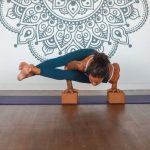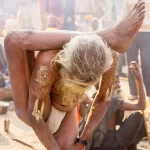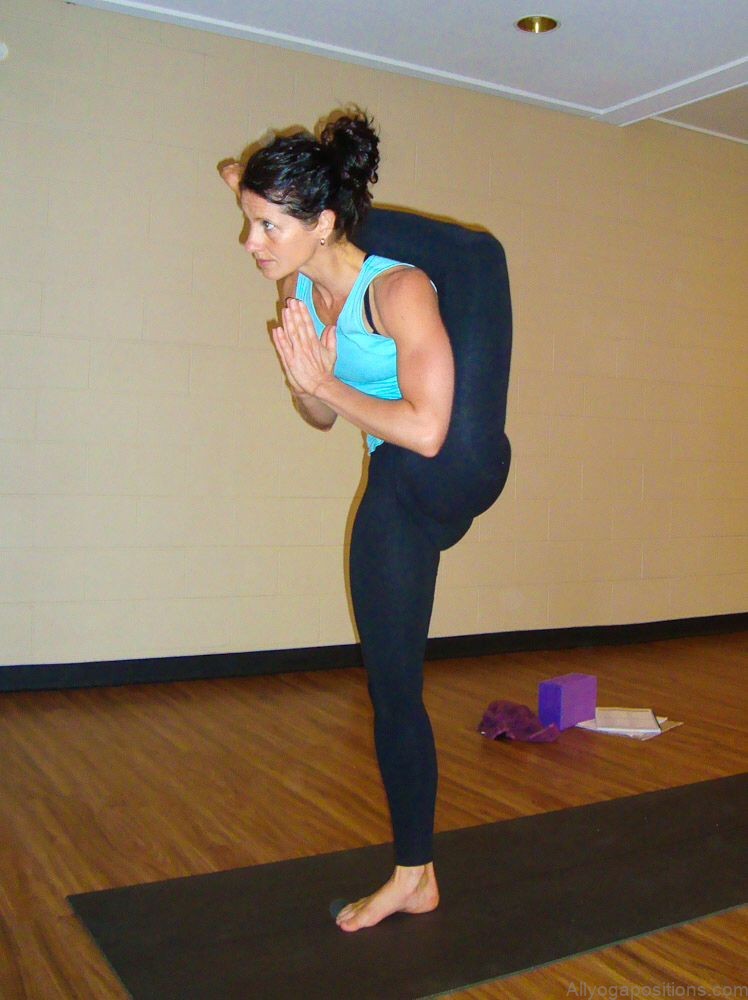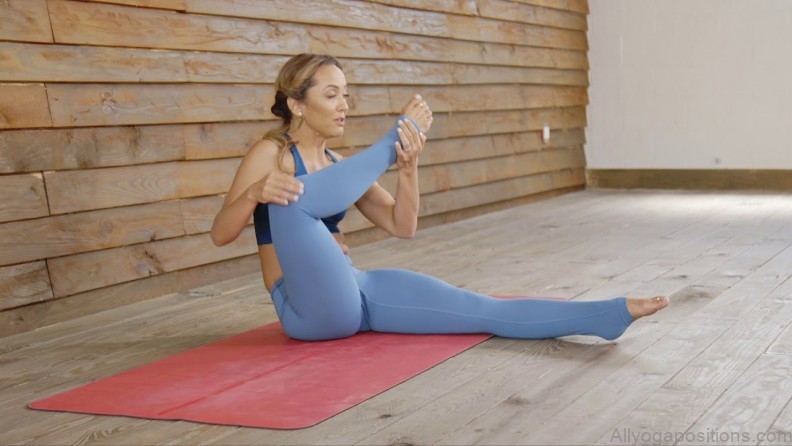The Standing Foot Behind the Head Yoga Pose, also known as Eka Pada Sirsasana, is a challenging and advanced posture that requires strength, flexibility, and balance. This pose may seem impossible to many yogis, but with consistent practice and proper guidance, you can master this pose and reap its many physical and mental benefits.
Exploring the Standing Foot Behind the Head Pose: What is it?
The Standing Foot Behind the Head Pose is a standing variation of the traditional Foot Behind the Head Pose. In this pose, you stand on one leg while holding the other leg behind your head with both hands. This posture requires a combination of strength, flexibility, and balance to achieve, and can be very challenging for many yogis.
Mastering the Standing Foot Behind the Head Yoga Pose: Tips and Benefits Photo Gallery
How to Safely Practice the Standing Foot Behind the Head Pose: Tips and Techniques
The Standing Foot Behind the Head Pose is an advanced posture that should be approached with caution and care. Here are some tips and techniques to help you safely practice this pose:
- Warm-up properly: Before attempting the Standing Foot Behind the Head Pose, it’s important to warm up your body with some gentle stretches and movements. This will help to loosen up your muscles and prepare your body for the demands of the pose.
- Practice with a teacher: If you’re new to the Standing Foot Behind the Head Pose, it’s a good idea to practice with a qualified yoga teacher who can guide you through the pose and help you achieve proper alignment and technique.
- Use props if necessary: If you’re not able to reach your foot behind your head with both hands, you can use a strap or a block to help you get into the pose. This can help to improve your flexibility and prevent injury.
- Listen to your body: As with any yoga pose, it’s important to listen to your body and not push yourself beyond your limits. If you feel pain or discomfort in the pose, back off and modify the pose or come out of it altogether.
Physical Benefits of the Standing Foot Behind the Head Pose: Strengthening and Stretching the Body
The Standing Foot Behind the Head Pose offers a wide range of physical benefits for the body. Here are some of the key physical benefits of this posture:
- Strengthens the legs: The Standing Foot Behind the Head Pose requires a lot of strength in the standing leg, which can help to build strength and stability in the legs and feet.
- Stretches the hips and hamstrings: The posture requires a deep stretch in the hip and hamstring of the lifted leg, which can help to improve flexibility and mobility in these areas.
- Improves balance and coordination: Balancing on one leg while holding the other leg behind your head requires a lot of balance and coordination, which can help to improve these skills over time.
Mental and Emotional Benefits of the Standing Foot Behind the Head Pose: Cultivating Inner Strength and Confidence
In addition to its physical benefits, the Standing Foot Behind the Head Pose can also have a positive impact on your mental and emotional well-being. Here are some of the mental and emotional benefits of this posture:
- Cultivates inner strength and confidence: Successfully mastering the Standing Foot Behind the Head Pose can be a great confidence booster, helping you to feel more self-assured and strong in other areas of your life.
- Boosts focus and concentration: Balancing on one leg while holding the other leg behind your head requires a lot of focus and concentration, which can help to improve your ability to stay focused and present in your daily life.
Relieves stress and anxiety: The practice of yoga, including challenging postures like the Standing Foot Behind the Head Pose, has been shown to have a positive impact on stress and anxiety levels, helping to calm the mind and promote relaxation.
Modifications and Precautions for Safe Practice: Making the Pose Accessible for AllWhile the Standing Foot Behind the Head Pose may seem like an impossible pose for many yogis, there are modifications and precautions that can make the pose more accessible for everyone. Here are some modifications and precautions to keep in mind:
Use a wall for support: If you’re struggling with balance in the pose, you can use a wall for support. Stand with your back to the wall and use it to support your lifted leg as you work on getting it behind your head.
Modify the pose with a strap: If you’re not able to reach your foot with both hands, you can use a strap to help you get into the pose. Loop the strap around your foot and hold onto the strap with both hands to help you pull your foot behind your head.
Don’t force the pose: It’s important not to force the Standing Foot Behind the Head Pose. If you feel pain or discomfort in the pose, back off and modify the pose or come out of it altogether.
Practice with a qualified teacher: Practicing with a qualified yoga teacher who can guide you through the pose and offer modifications and adjustments can help you to safely and effectively practice the Standing Foot Behind the Head Pose.
In conclusion, the Standing Foot Behind the Head Yoga Pose is an advanced posture that requires strength, flexibility, and balance. With consistent practice and proper guidance, however, you can master this challenging pose and reap its many physical and mental benefits. Remember to approach the pose with caution and care, listen to your body, and don’t be afraid to modify the pose as necessary to make it more accessible and safe for you.
Table of Contents
Maybe You Like Them Too
- Mastering Virabhadrasana A: The Warrior Pose of Empowerment
- Embracing the Essence of Wide Legged Forward Bend: A Deep Dive
- Unlocking the Power of Prasarita Padottanasana: The Wide-Legged Forward Bend
- The Power and Elegance of the Wide Legged Forward Bend II Yoga Pose
- Mastering the Warrior II Pose: A Deep Dive into Its Benefits and Techniques








